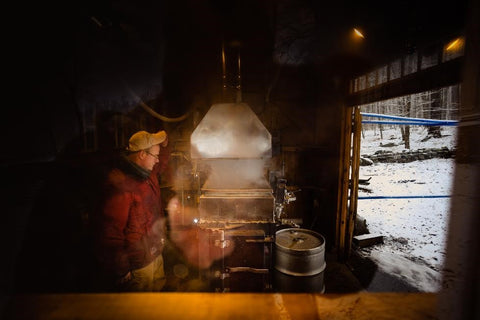It's a thrilling time of year! Winter is here, sometimes in fits and starts, and the fields are dormant. The days are getting longer, and the maple trees are pushing sap out to their branches.

In southern New England, we may have a dusting of snow. The evergreen shrubs and trees really "pop" out from the grays of the deciduous tree trunks. The blueberry bushes may still have a tinge of red foliage on them, but otherwise the leaves are gone. Sadly, the tree which used to keep its kraft-brown fluttery leaves through the entire winter -- the beech tree -- is slowly retreating from the landscape. They are all withering due to a nematode disease.
Regular wildlife is sporadic now, but includes dark-eyed juncoes and nice red cardinals, along with an occasional bald eagle and hawk overhead. The deer continue their daily rounds of herbivorous feasting on the almost non-existent foliage, but at least the time frame for eating (the cover of night) is much extended as we approach winter solstice.

If we're lucky, we'll have a bright white snow fall followed by a breezy day with the bluest sky imaginable. Down along the eastern coast of Connecticut, the Long Island Sound will keep our temperatures a bit warmer at first, but then as winter moves into Spring, the opposite happens where our days are cooler than the interior of Connecticut. Once I took a beach walk after a long, very cold spell, and the clink-clink sound of ice gently moving with the waves was eery, like something out of the movie "Titanic" (and, btw, the explorer who found the shipwreck lives right here in Lyme!).

On the farm, the wreaths for the door are gradually browning by the end of January, and I take them apart. The smells of boiling apple cider and maple sap waft from the sugar shack!

Boiled apple cider was a treat the colonists made to preserve the apple harvest. We use it in our Elderberry Apple Shots. Apple season on the East Coast runs from October through January, quickly followed by maple syrup season, which runs February and early March. We always need a dose of good luck here, for the weather to cooperate and provide a 5 or 6 week run for maple sap. Read more about the seasons on Fat Stone Farm here.

